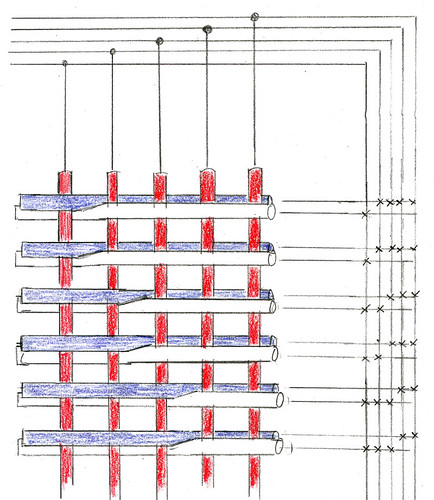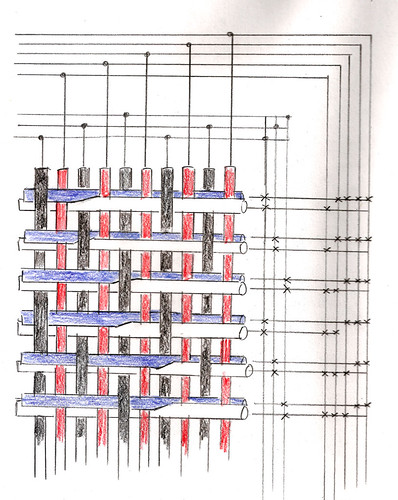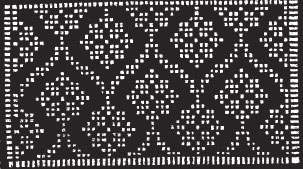As I’ve written before, samite is weft-faced compound twill weave. A compound weave is any type of woven structure which involves more than two sets of elements – such as one (or more) warp sets, plus two (or more) weft sets that interact to form a pattern. Samite uses two warps acting seperately (a main warp and a binding warp), and a weft composed of two or more series of threads. These weft threads work in combination to produce one weft pick on the face of the cloth (called a passée).
To better understand, let’s look at the two warps separately. We’ll use a simple design as our pattern. Each square represents one main warp end (or more if the main warp is doubled/tripled), and two passées (or more if the main warp is doubled/tripled). When patterning we ignore the binding warp.

Pattern graph
First, there is the main warp. This is the warp responsible for the patterning of the fabric. The dominant weft (the one we want to see) runs over top of the main warp, while the others are kept to the reverse. Colour changes are achieved by bringing a new weft thread to the face, while simultaneously dropping the other weft to the back. Only one weft at a time will be dominant, all others will be held to the reverse. The main warp will be completely covered on both sides of the cloth, and will never be seen.

Main warp in red, wefts in blue and white
Secondly, there is the binding warp. This warp works independently of the main warp, binding the cloth in a 1/2 twill. Unlike the main warp, this warp treats the full passée of warp threads as one unit.

Binding warp in black, wefts in blue and white
The two warps together produce samite.

Main warp in red, binding warp in black, wefts in blue and white
And the finished fabric will look like this. Note the main warp is completely invisible.

Binding warp in black, wefts in blue and white
* Drawings done in the style of Riboud’s Samit & Lampas, and Becker’s Pattern and Loom.










